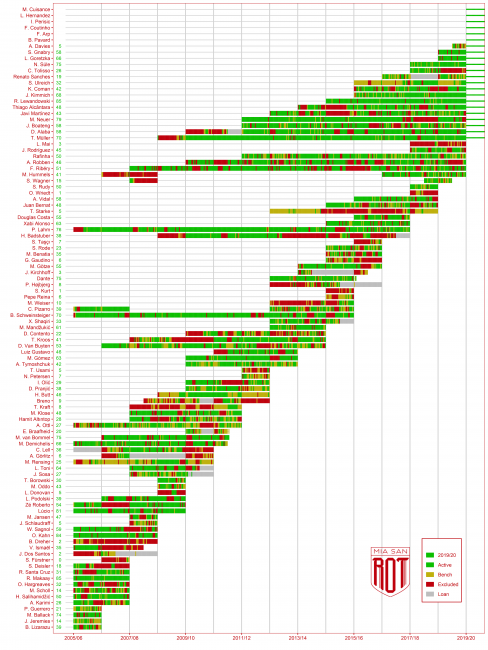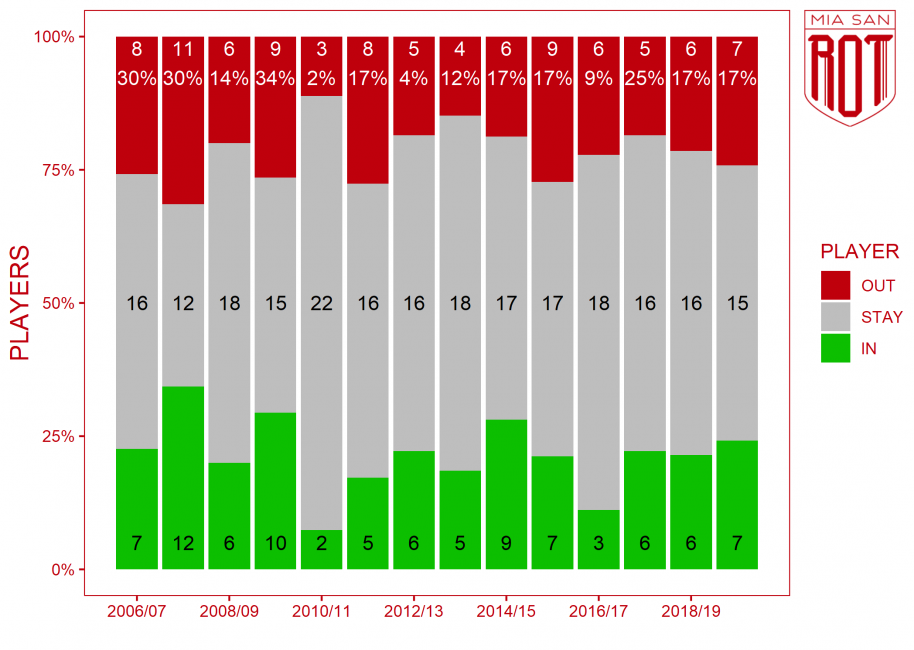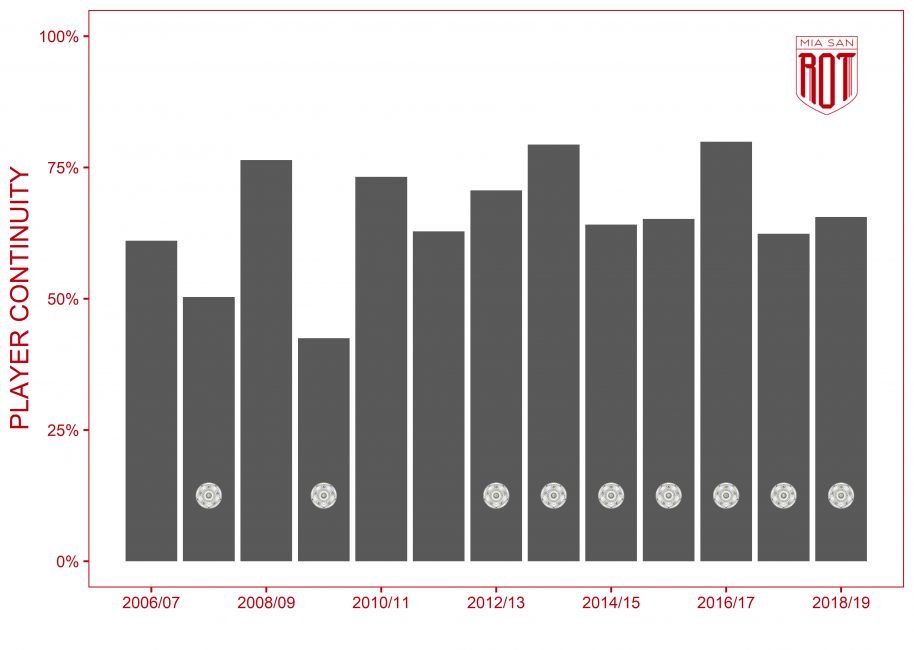Onward, ever onward – or the revolution at last?
Sudden revolution or steady evolution?
A revolution is defined as a sudden burst of radical change. I have taken a closer look at quite how radical the change of the Bayern squad from last season to this one was and tried to compare the current revolution to earlier ones.
How to better make a first approach to the issue of squad revolution than by simply tracing the changes in the Bayern squad over a longer time period:

The first graphic depicts the main uses of a Bayern player per Bundesliga game. Additionally, the green number at the left margin shows the share of game time the respective player has had while at Bayern.
Statistical outliers
The graphic highlights a number of interesting individual player stories, for example that of the “lost child returns home” Mats Hummels, Sandro Wagner, and Claudio Pizarro.
There are also the typical stairway-like steps that mark the transition from one season to the next. At first glance, this summer’s transfer activity does not particularly stand out, apart from the fact that with Arjen Robben, Franck Ribéry, and Rafinha three long-serving players left the club at once. This is similar to the beginning of the 2017/18 season, when in Philipp Lahm and Holger Badstuber two similarly long-time members of the club left together.
Even though looking at individual player journeys is intriguing, it does not tell a whole lot about the extent of a squad revolution.
The next graphic is more informative in this regard.

On a per season basis, the graphic shows the number of new arrivals and departures. Any player who has played five times or fewer in a given season is classified as a departure. Thus, Tolisso for example is considered a departure for the 2018/19 season and an arrival for the 2019/20 season (he made the matchday squad only four times due to a rupture of the cruciate ligament).
What else does a departure tell us?
The graphic does not only depict the number of outgoing players, but also how much total game time these players saw in their last season at the club. The departures of the current season, for instance, free up only 17% game time for other players to occupy.
The second graphic mainly confirms the impression given by the first one that the extent of the revolution in the Bayern squad is not quite as substantial as the term suggests.
A squad revolution does not necessarily imply signing players from other clubs. In theory, it would be possible that a group of youth players from the second team or the academy suddenly gets a big share of game time, completely changing the face of the first team as a result. The following graphic represents only a player’s real game time and highlights the differences in the share of minutes played between adjacent seasons. A “player continuity” value of 100% indicates that a player saw exactly the same number of game minutes in the reference season as in the one before that.

As an added feature, I have highlighted Bayern’s title winning seasons (which, however, is of little explanatory value after the 2012/13 season for lack of variety). As we cannot yet know the distribution of game time this season, the latest available value here is that of last season. For the current season, it thus remains to be seen if this summer’s transfers are going to entail a revolution in game time allotment. For the moment, all this figure is able to tell us with certainty is that the last real squad revolution occurred in the season 2009/10, which ended with the 22. Bundesliga title for Bayern.




 August 28, 2019
August 28, 2019 


